Trees Birds Mammals Fish Amphibians Reptiles
Wild Algarve
Bookshop
Small Tortoiseshell Butterfly - Aglais urticae
Phylum: Arthropoda - Class: Insecta - Order: Lepidoptera - Family: Nymphalidae
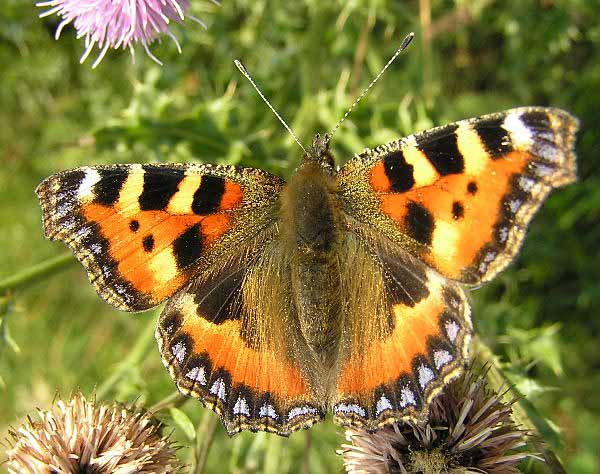
This is one of the few butterflies that hibernate as adults,
and you may come across them indoors in the dead of winter. In Britain they first emerge in March,
and in mild years they are still seen on the wing as late as October.
In mild winters the hibernation of Small Tortoiseshells is sometimes interrupted on warm January or February days, when they can be seen basking on south-facing walls.
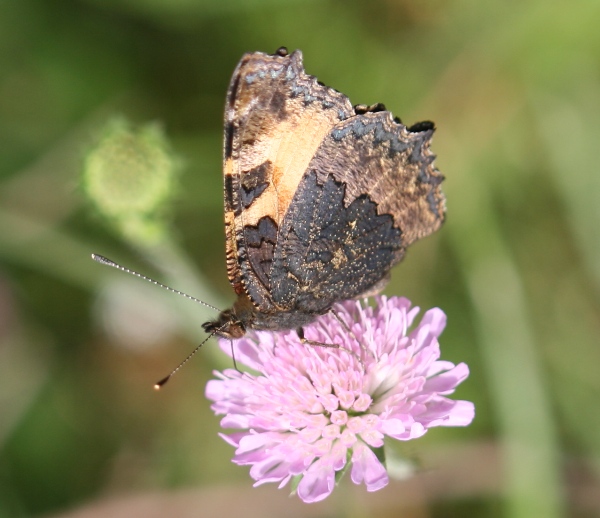
Distribution
Small Tortoiseshells can be found throughout Europe, from the Mediterranean right into northern Scandinavia (and eastwards through Asia to the Pacific Coast).
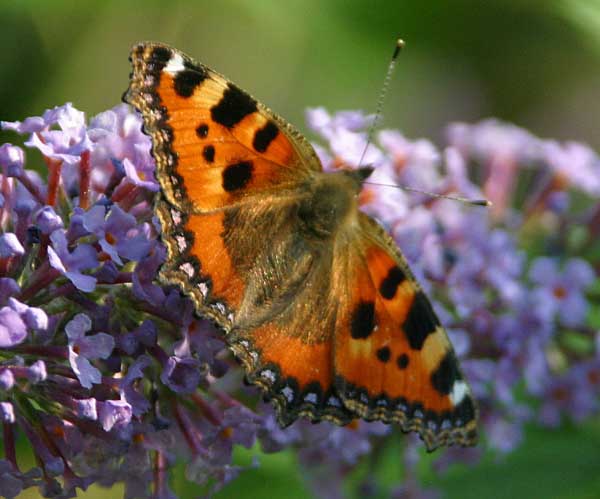
In Britain these common and well known butterflies are particularly fond of Buddleia blossom in gardens and on railway embankments; they also take nectar from thistles, and so they are often
to be seen on untended banks of spate rivers.
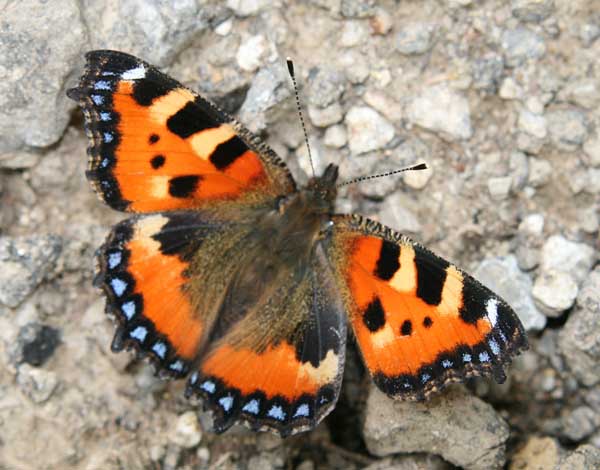
Lifecycle
As the specific epithet implies, the larval foodplants of this species are nettles of the genus Urtica, and most commonly the Stinging Nettle, Urtica dioica.
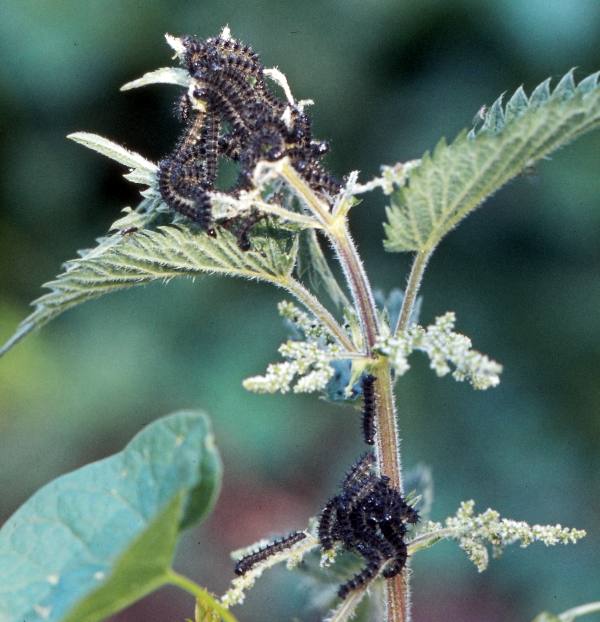
Above: early instars if Small Tortoiseshell larvae
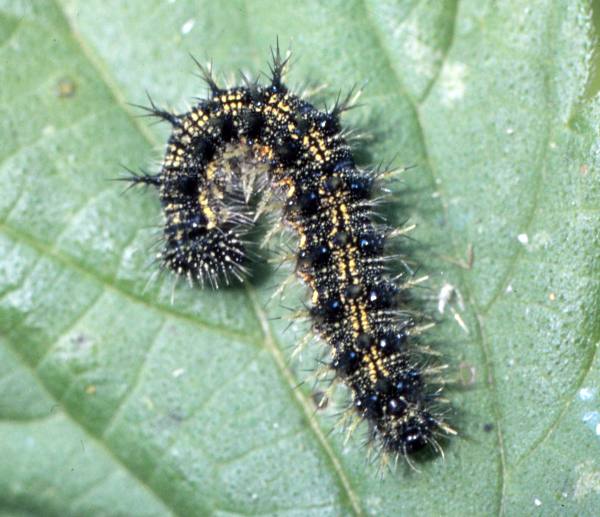
Above: a Small Tortoiseshell larva alone before pupating
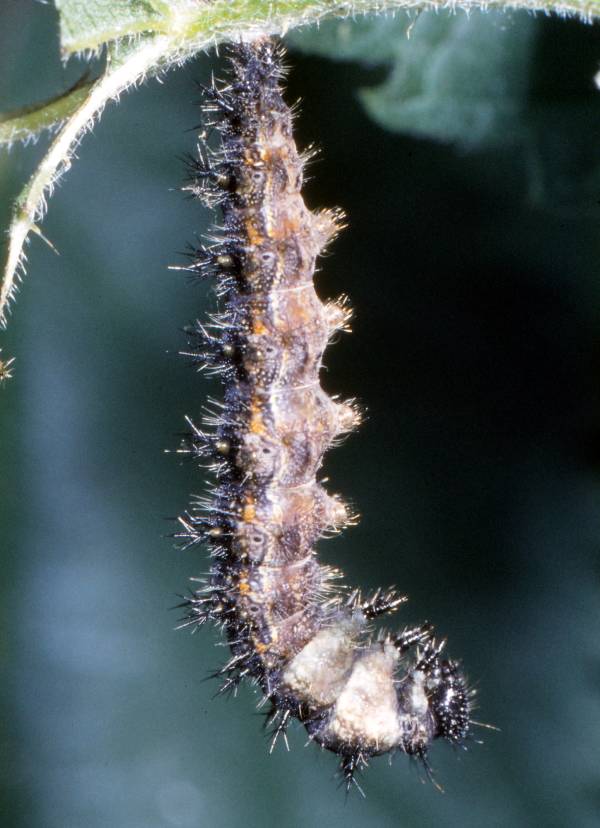
Above: a Small Tortoiseshell larva about to pupate
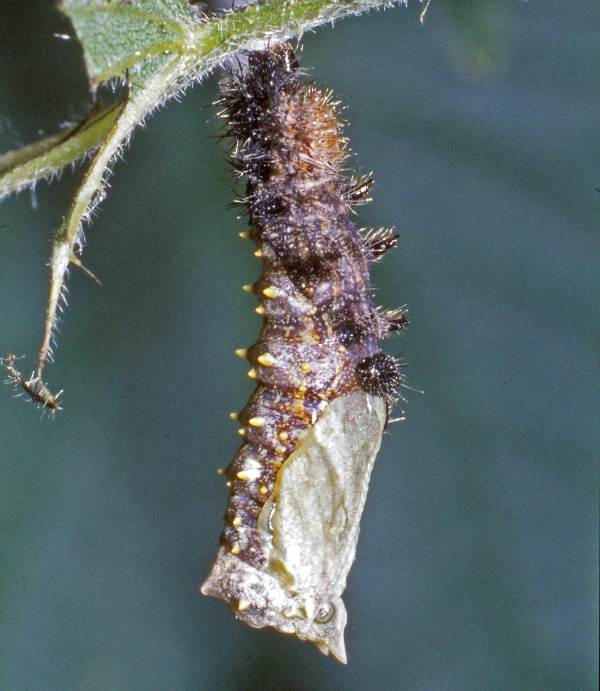
Above: a pupating Small Tortoiseshell
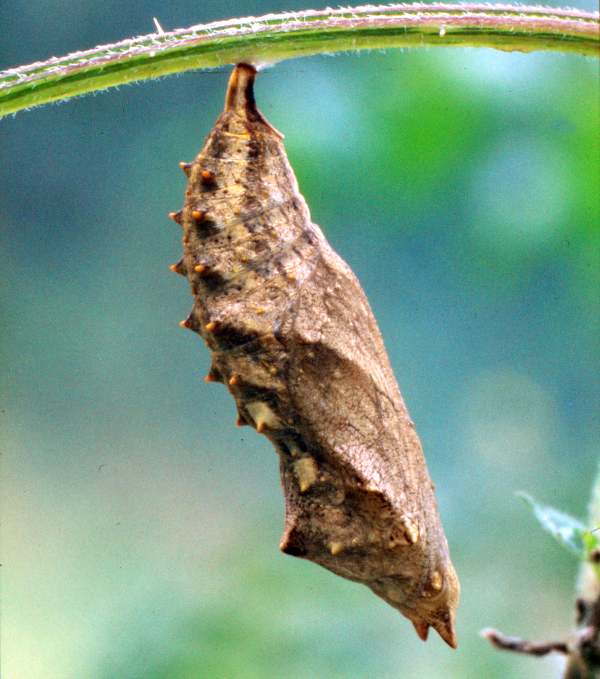
Above: a Small Tortoiseshell just pupated
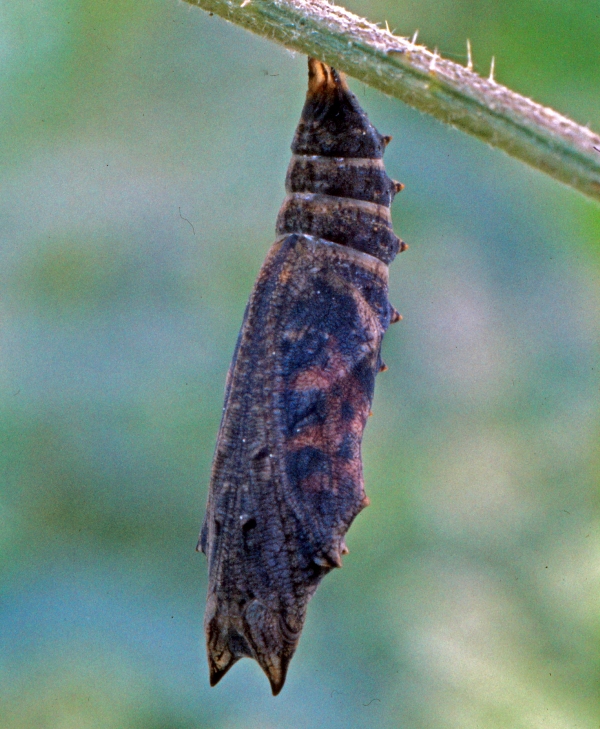
Above: a Small Tortoiseshell about to emerge
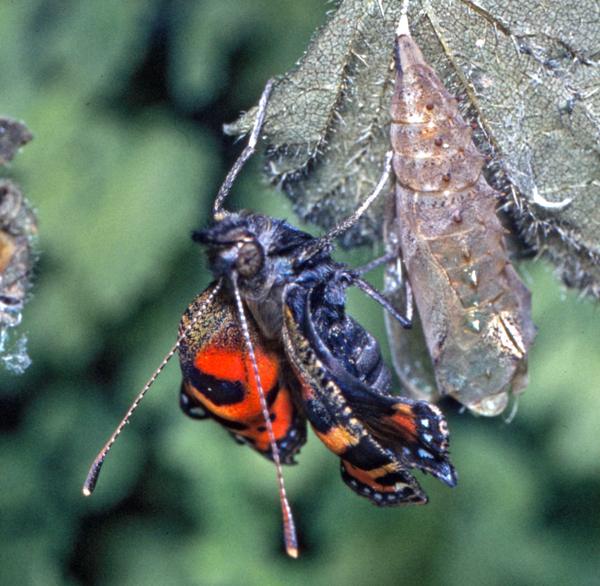
Above: a Small Tortoiseshell emerging from pupation
In some parts of England, notably the Midlands, the common name Bobby Howler was applied to the Small Tortoiseshell Butterfly, but the reason for this is obscure.
Etymology
The genus name Aglais comes from Greek and means 'splendid' or 'shining', while the specific epithet urticae is a reference to the burning sting of the larval food plant Stinging Nettle, Urtica doica.
Not to be confused with...
The Large Tortoiseshell butterfly Nymphalis polychloros is similar in appearance but
does not have the large black patch on the underside of the hind wing. This butterfly is now very rare in Britain and indeed extinct in most regions, turning up occasionally but very locally in parts of southern England and Wales.
Acknowledgements
This page includes pictures kindly contributed by Betty and Tony Rackham.
Studying butterflies and moths...
Excited by rivers and streams? So are we, and we're pretty sure you would find the Winding River Mystery trilogy of action-packed thrillers gripping reading too. Dead Drift, Dead Cert, and Dead End are Pat O'Reilly's latest river-based novels, and now they are available in ebook format. Full details on our website here...
Buy each volume in ebook format for only £2.47 on Amazon... Paperbacks also available on Amazon at £6.95 each. All proceeds go towards keeping the First Nature website online.
Please Help Us: If you have found this information interesting and useful, please consider helping to keep First Nature online by making a small donation towards the web hosting and internet costs.
Any donations over and above the essential running costs will help support the conservation work of Plantlife, the Rivers Trust and charitable botanic gardens - as do author royalties and publisher proceeds from books by Pat and Sue.